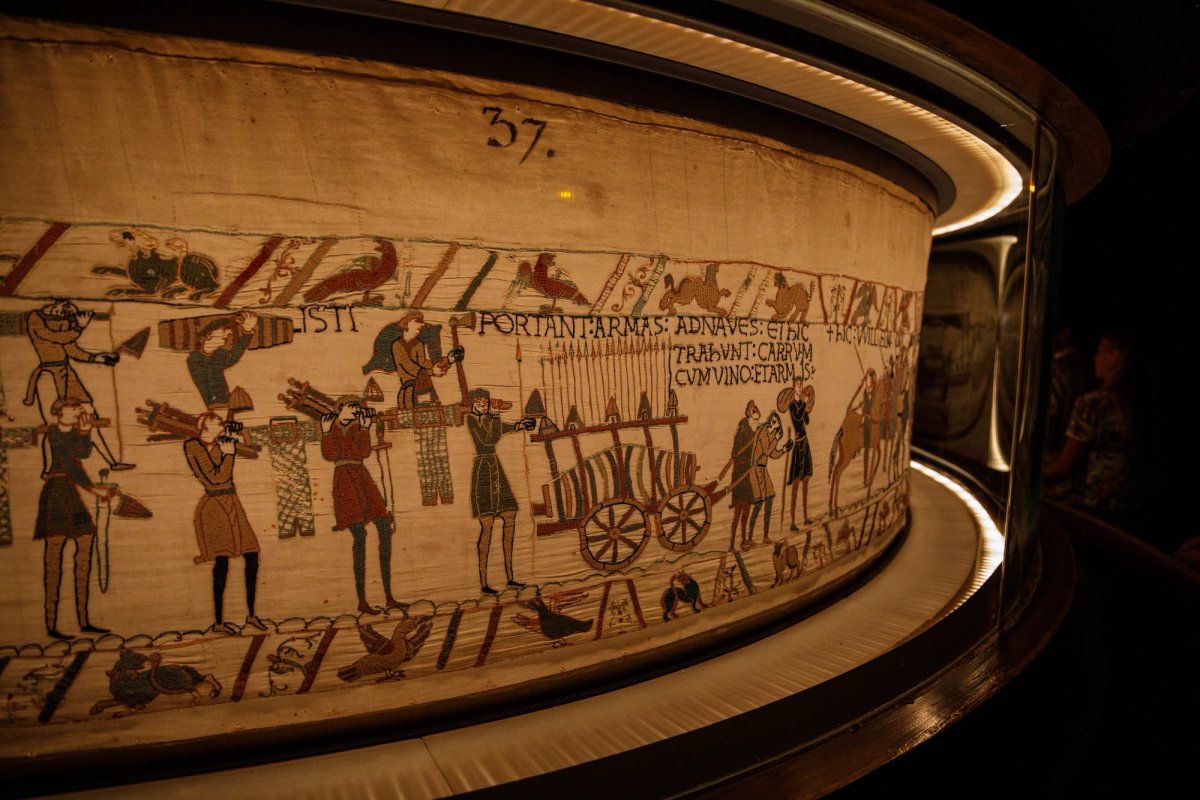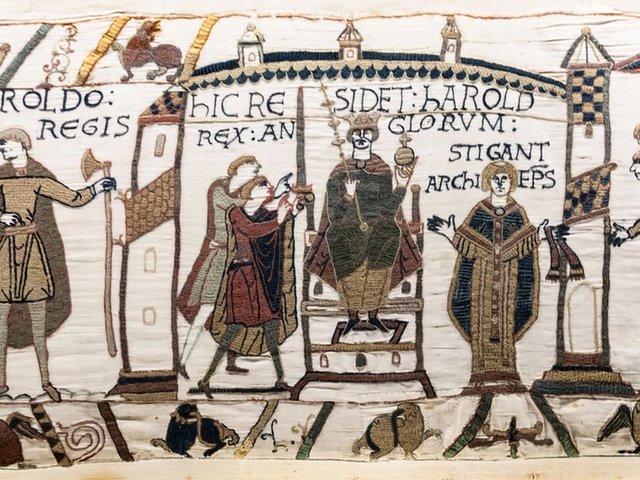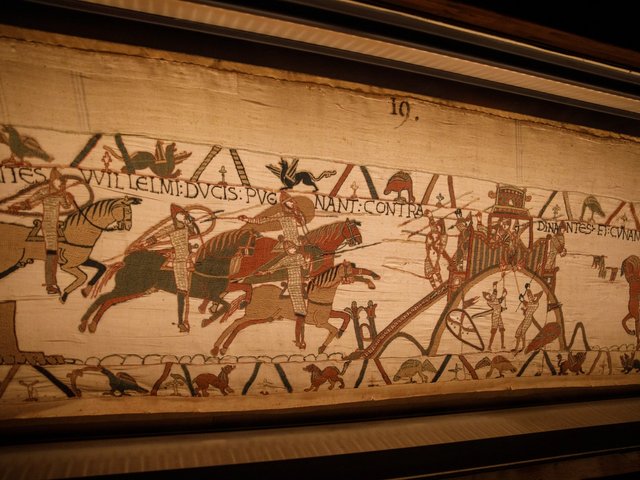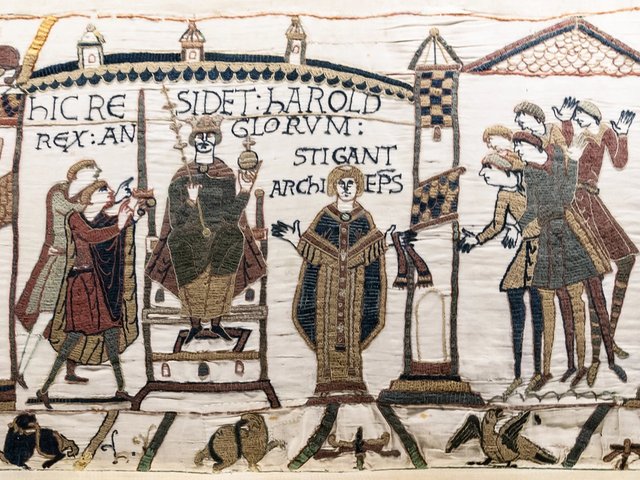The Bayeux Tapestry will go on show at the British Museum in London next year after UK Prime Minister Keir Starmer and President Emmanuel Macron of France agreed the historic loan. The display will mark the first time the precious tapestry, which depicts the 1066 Norman invasion and Battle of Hastings, has been in Britain in almost 1,000 years.
The tapestry will go on show in the Sainsbury Exhibitions Gallery of the British Museum between September 2026 and July 2027. In return, Sutton Hoo treasures and the Lewis chessmen, some of the British Museum’s most important objects, will be loaned to institutions in France.
The cultural partnership and exchange were announced today by Starmer and Macron, who is currently on a State visit to the UK, a move widely seen as re-setting UK-French relations following the tumultuous Brexit years. The loan will form part of a bilateral season of culture in 2027.
In a statement Nicholas Cullinan, the director of the British Museum, stressed how the new France-UK partnership reflects his strategy of working with other museums globally, based on lending or exchanging items. “This is exactly the kind of international partnership that I want us to champion and take part in: sharing the best of our collection as widely as possible and in return displaying global treasures never seen here before,” he said.
Cullinan adds: “The Bayeux Tapestry is one of the most important and unique cultural artefacts in the world, which illustrates the deep ties between Britain and France and has fascinated people across geographies and generations. It is hard to overstate the significance of this extraordinary opportunity of displaying it at the British Museum.”
The tapestry deal has however been several years in the planning. In 2022 the British and French governments finalised a deal securing the loan of the historic embroidery to the UK. Britain has also tried, and failed, to borrow the work twice before, in 1953 and 1966.
The Bayeux Tapestry is a Medieval embroidery, 70m long and 50cm high. Created in the 1070s, the nine panels with 58 scenes depict events leading up to the Norman Conquest of England after the Battle of Hastings in 1066. The tapestry, probably commissioned by Bishop Odo (the half-brother of William the Conqueror, the Duke of Normandy), is widely believed to have been created in Kent.
The tapestry has been on display in various locations in France throughout its history and has been housed at the Bayeux Museum in Normandy since 1983. The museum is set to close for two years for renovation from September.
In 2021, concerns were raised that the tapestry may be too fragile to travel. Starmer told History Extra earlier this year: “The conservation and protection of it is obviously crucial, and I know that the Department for Culture, Media and Sport continues to work closely with their counterparts in France on the planned loan”.






